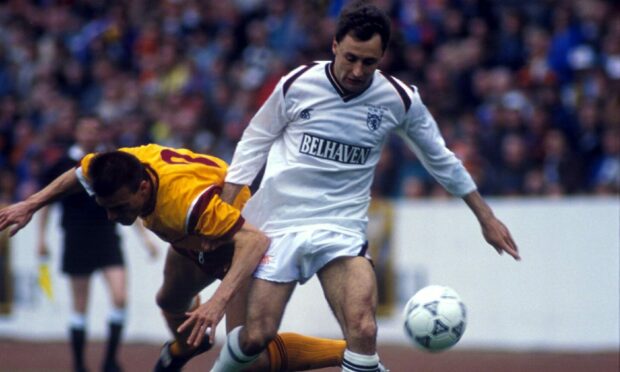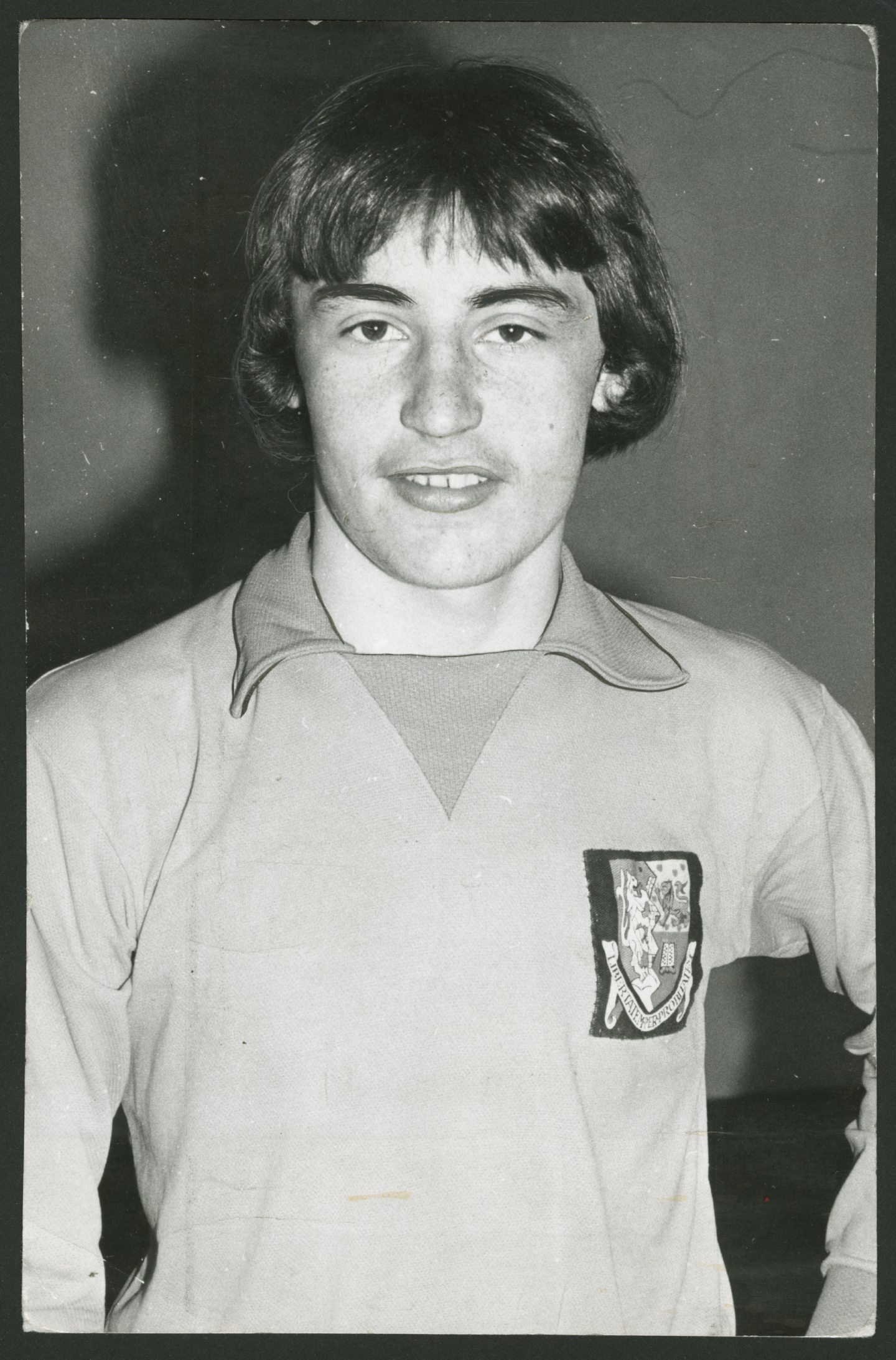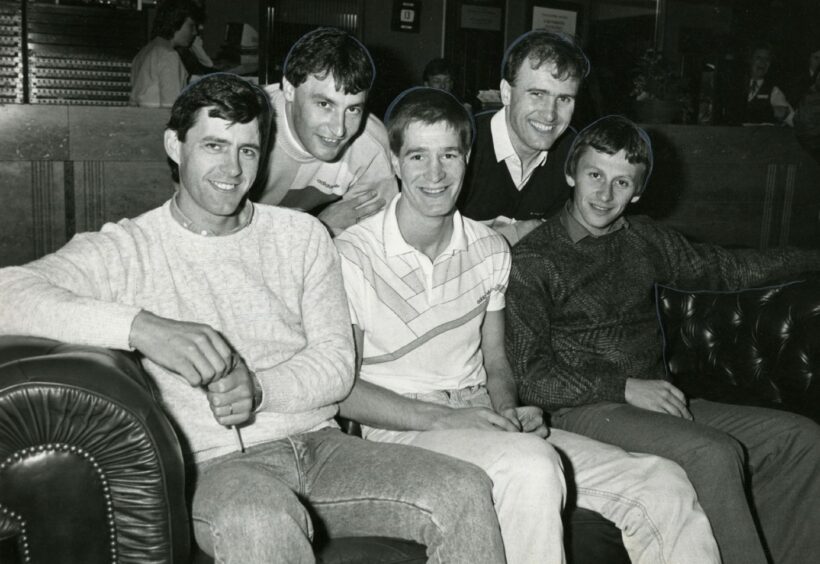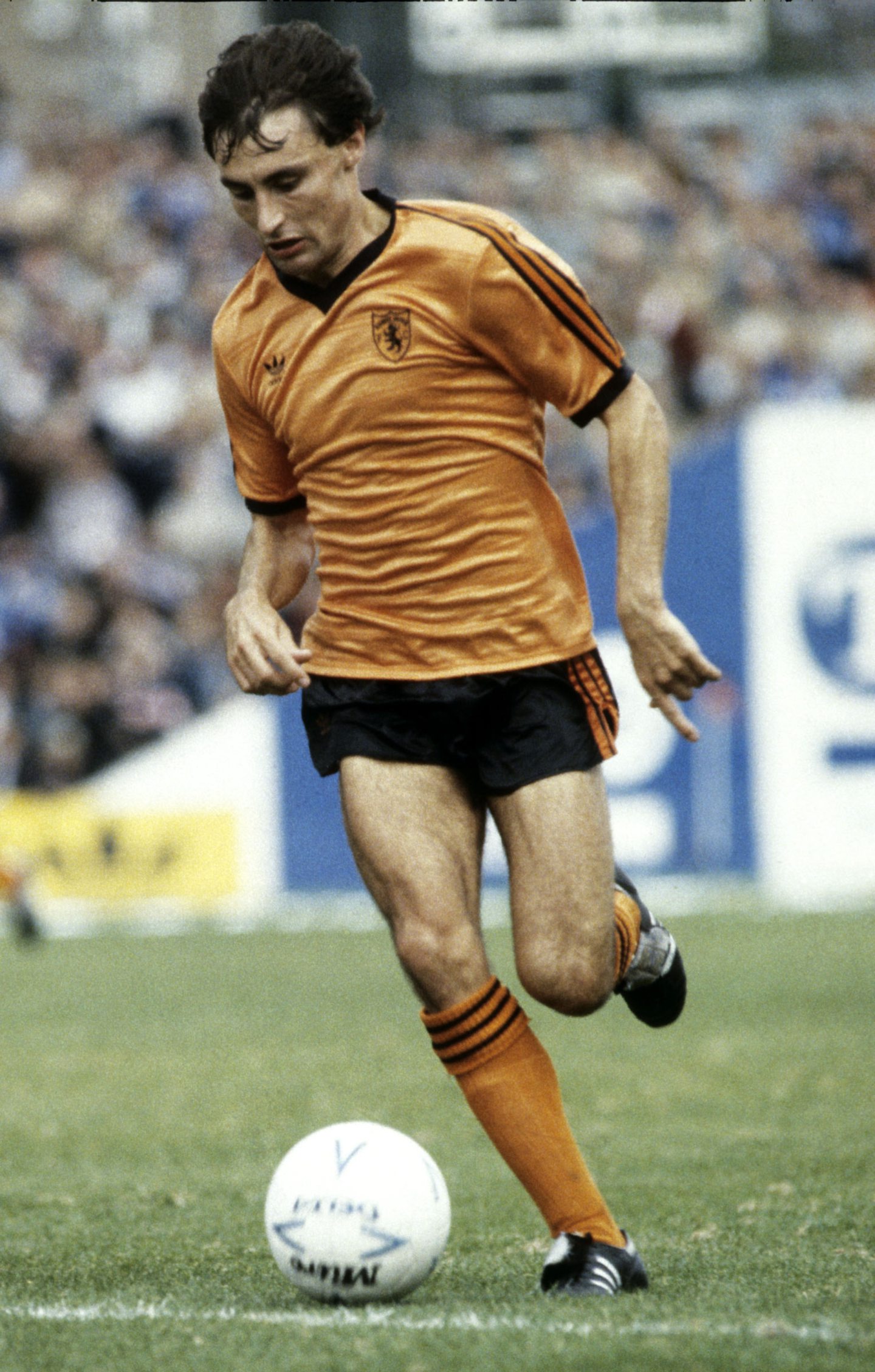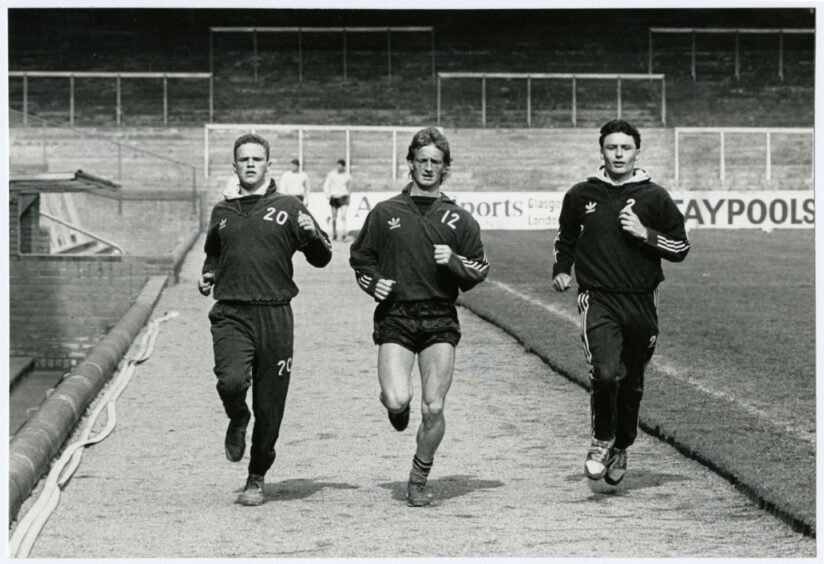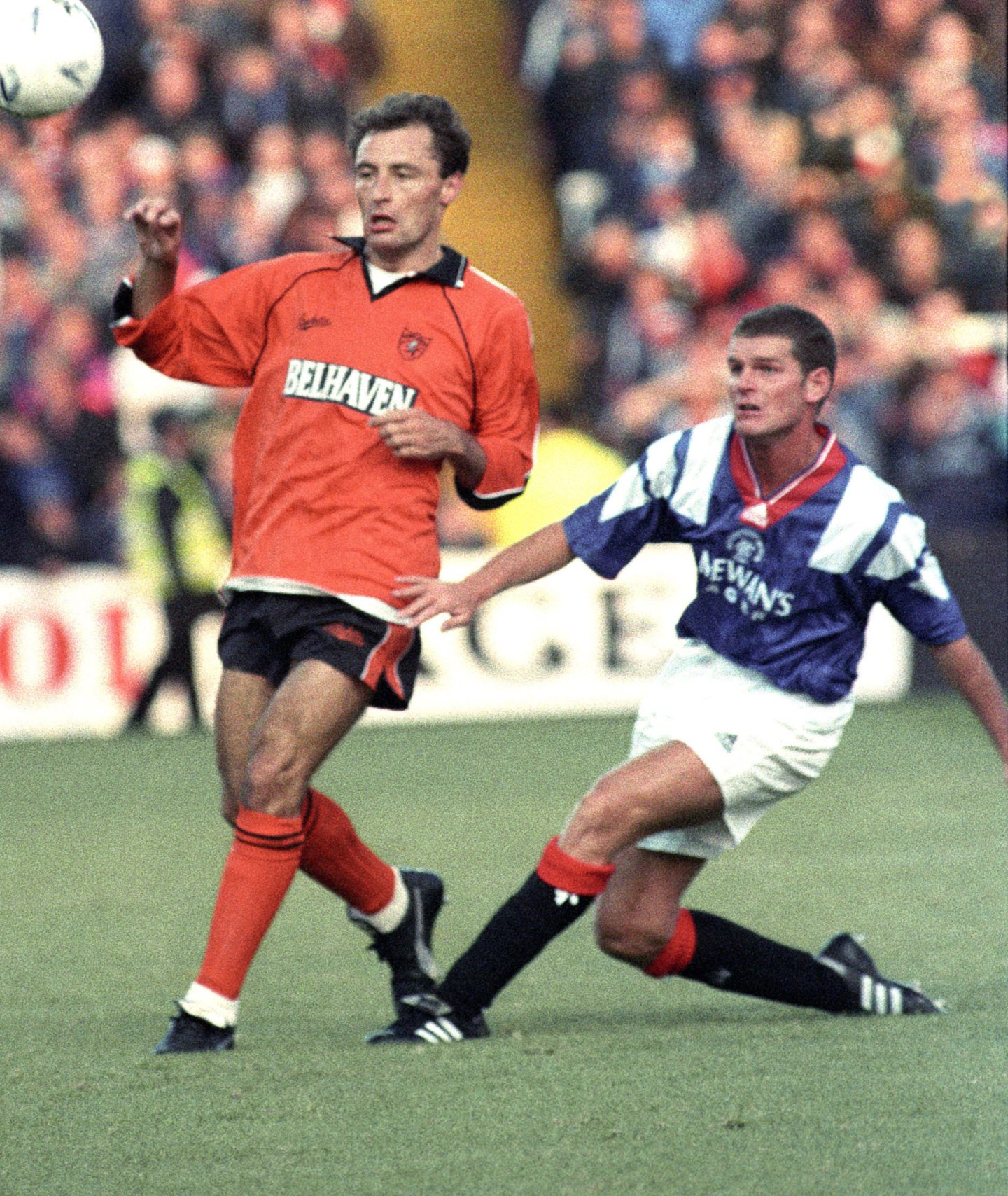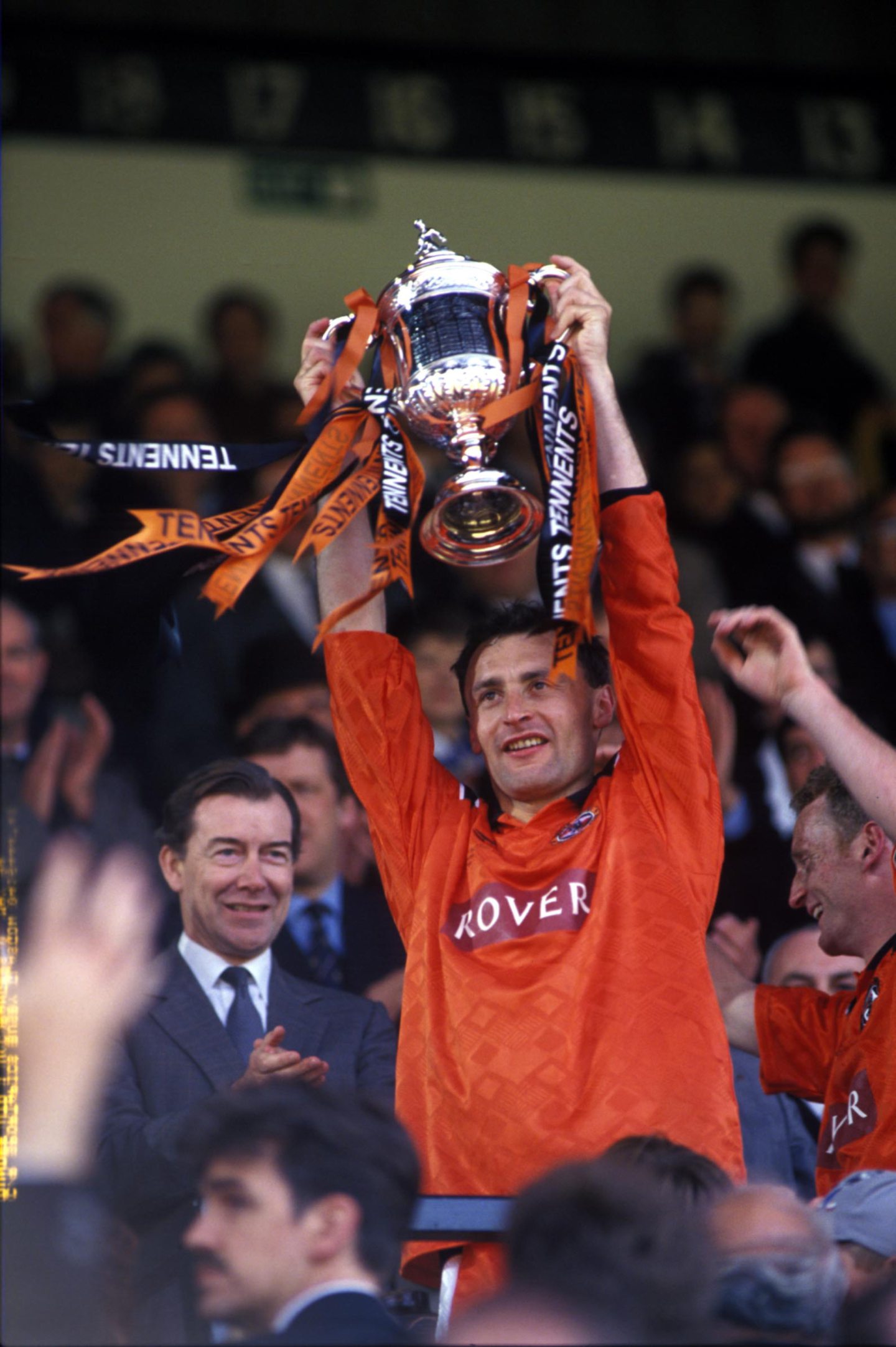Maurice Malpas never looked back after winning a £10 steak voucher following his Dundee United debut 40 years ago.
The man-of-the-match performance against Airdrie on November 21 1981 was the first of 830 appearances during a career spanning two decades.
Initially he combined his football career with full-time study at Bell Street Tech.
And come the heady days of European competition and the arrival of silverware at a rather hungry Tannadice trophy cabinet, he was still a student by day and the lonesome, part-time footballer by night.
Malpas is a Fifer.
He was born in Dunfermline in 1962.
He attended Queen Anne High School, gained schoolboy caps while a pupil there, and trained from time to time with Dunfermline Athletic.
But as he progressed to Leven Royals under-14s, he was spotted by Dundee United scout Jock Speed and was signed as a midfielder on a schoolboy form.
Short at the back
Malpas was called up as a part-timer in 1979 but struggled to make an impact and was close to being freed before switching to right-back in a reserve game.
Malpas said: “I had never played in defence until we went to Falkirk with the reserves one night and I only switched because we were short at the back.
“The manager asked me to play right-back and I was happy to give it a try.
“I am lucky I did, as things might have been different if I hadn’t.
“In fact, as a midfielder, there was talk of me being freed.
“Graham Low, who coached the part-timers, had spoken to me about my lack of height and it was obvious they weren’t happy with my progress.
“It maybe sounds strange, but although I had probably realised a free was a possibility, I was never really worried by it; though, of course, I tried to prove I should be kept on.
“I had signed part-time forms only because I wanted to continue my education.
“I was at the College of Technology in Dundee and was really determined I was going to pass my exams there.
“That’s why I didn’t feel under pressure about possibly being released by United.
“To be honest, I probably also had a part-time attitude to my football at that time.”
Working harder
Instead of carrying on and risking being put on the scrapheap, he began to work harder and make progress towards the first team.
Instead of training just three times a week, he started coming in every night.
“At that time, there were plenty of people to train with and I was one of a dozen or so part-timers.
“Boys like Derek Stark all had jobs outside football and even Davie Dodds was just turning full-time.”
He made his first-team debut in November 1981, aged 19, when he replaced the injured Derek Murray in the 4-0 win against Airdrie at Tannadice.
“It was a home game against Airdrie and the thing I remember most about it was being man-of-the-match and getting a £10 voucher for steak,” he said.
He won a place on the bench for the following week’s 1981 League Cup Final at Hampden where United went down 2-1 to John Greig’s Rangers.
There were a few times in the middle of games when he’d tell me what time we were playing golf the next morning!”
Malpas on playing alongside Hamish McAlpine
While he was to remain part-time for the best part of another four years, that debut marked a big change in his life.
His early performances at the club marked him out as a star of the future and he picked up eight under-21 caps for Scotland.
“I came into the team after playing right-back for just a couple of months in the reserves, but I got a lot of help from Paul Hegarty in the middle,” he said.
“Then I was switched to the other side of the defence.
“I had never played there, but one day Derek Murray picked up an injury and I was moved to cover.
“Again, I was lucky because there were so many good players around me to help out. Dave Narey was inside and, whenever I was having a bad game, he was always there.
“In front of me was Eamonn Bannon, so I did not have to run up and down the park.
“I also got a lot of advice from Hamish McAlpine, though his methods weren’t what you might expect.
“If I was having a bad game, he would talk to me and help me relax.
“There were a few times in the middle of games when he’d tell me what time we were playing golf the next morning!”
Weaker foot
That a right-footed player should go on to become one of the best left-backs Scotland has produced was down to his father Danny’s belief that footballers should be versatile.
“He had a bugbear about players being able to use both feet and he would often practise with me by throwing the ball to my left,” he said.
“That meant I was quite comfortable on the left side of the park.”
Not that United were happy to leave it at that.
Realising the team could be stronger with Malpas on the left and a young Richard Gough at right-back, Jim McLean set about making sure a right-footed player on the left would not be a weak link.
The first of many senior honours came his way when United won the 1982-83 League Championship.
They came thick and fast after that: a League Cup runners’-up medal, four Scottish Cup runners’-up medals, a Uefa Cup runners’ up medal and, eventually, that elusive Scottish Cup winner’s medal in 1994, when he captained the side.
And, as if that wasn’t enough, he was picked by Jock Stein for his first full appearance for Scotland in 1984, and went on to win a club record 55 caps for his country.
Malpas began a coaching career in 1991 while still a Dundee United player, continuing as a coach after his retirement in 2000 until leaving the club in 2003.
He remains a towering figure in the Tangerines’ history.
More like this:
When Dundee United first bombed Barcelona out of Europe
Why was Walter Smith known as ‘The Bear’ during his Dundee United days?
Dundee United legend Jim McLean: A football life in pictures
